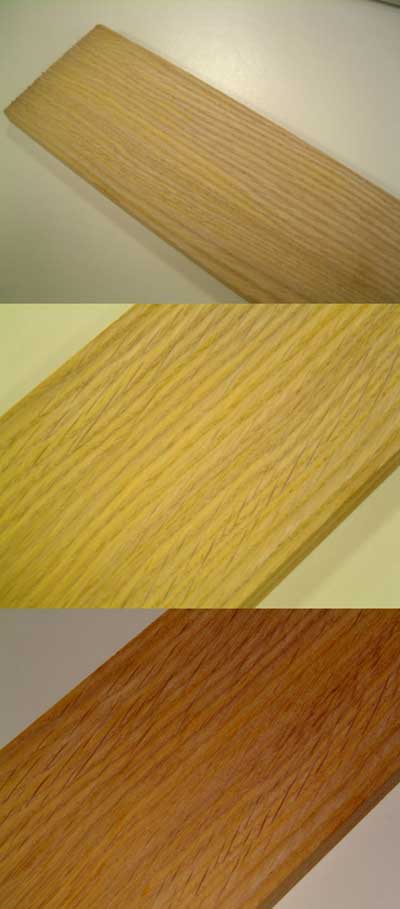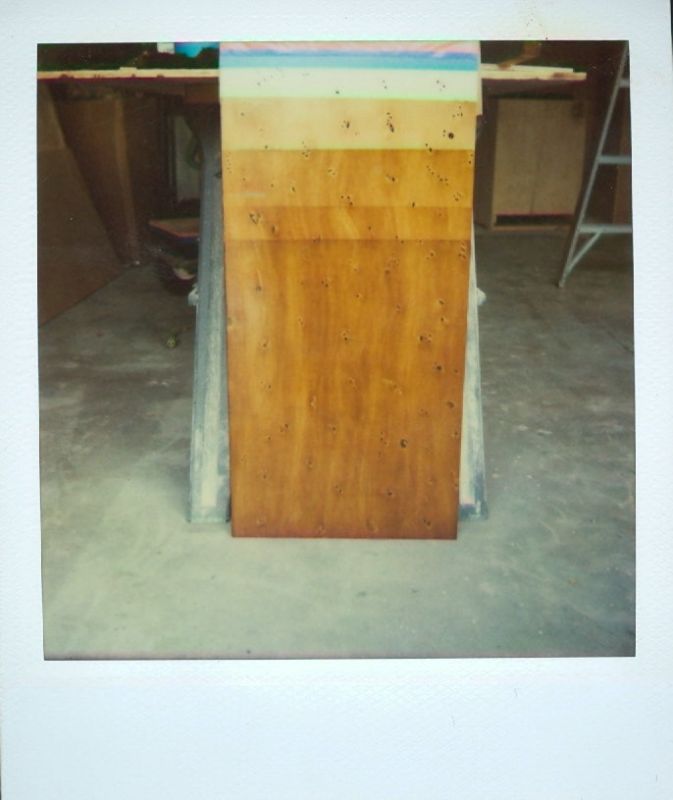Have you ever wondered why your woodwork has turned yellow? Well, you’re not alone! Many people have encountered this issue and are left scratching their heads. Don’t worry, though. In this article, we’ll explore the reasons behind this yellowing phenomenon and provide you with some simple explanations.
Now, you might be thinking, “Why has my woodwork gone yellow?” The answer could lie in a couple of possibilities. It may be due to the natural aging process of the wood or exposure to sunlight over time. Another factor to consider is the type of finish or stain used, as some products can yellow over the years.
But don’t fret just yet! We’ve got you covered. In the following paragraphs, we’ll delve into each of these causes in more detail, offering tips and solutions to help you restore the natural beauty of your woodwork. So, let’s get started and bring back that vibrant, woodsy appeal!

Why Has My Woodwork Gone Yellow? Understanding the Causes and Solutions
Woodwork can add warmth and beauty to any space, but it can be disheartening when it starts to develop a yellowish hue. Understanding why your woodwork has turned yellow is crucial in finding the right solution to restore its natural color. In this article, we will explore the common causes of yellowing woodwork and provide helpful tips to prevent and remedy the issue.
The Effects of Aging and Sunlight Exposure
One of the main reasons why woodwork may turn yellow over time is due to the natural aging process. As wood ages, it undergoes chemical changes that can alter its color. Sunlight exposure can also contribute to this yellowing effect. UV rays can break down the lignin in wood, causing it to darken and develop a yellowish tint. Additionally, prolonged exposure to sunlight can fade the original color of the wood, making it appear yellow or orange.
To prevent or minimize the effects of aging and sunlight exposure, it is essential to protect your woodwork by applying a high-quality finish or sealant. These coatings provide a barrier against UV rays, slowing down the yellowing process. Regular maintenance and reapplication of the finish can help maintain the wood’s natural color and protect it from further damage.
High Humidity and Moisture Levels
Excessive humidity and moisture can also cause woodwork to yellow. When wood absorbs moisture from the air or comes into direct contact with water, it can lead to chemical reactions that result in discoloration. This is especially true for unfinished or poorly sealed wood, as the moisture can penetrate the surface and affect the wood fibers.
To prevent yellowing caused by high humidity and moisture, it is crucial to maintain proper ventilation in your space. Use dehumidifiers or fans to reduce humidity levels, especially in areas prone to moisture buildup like bathrooms or kitchens. Ensuring that your woodwork is properly sealed with a moisture-resistant finish can also help protect it from yellowing.
The Impact of Environmental Factors
Environmental factors such as smoke, pollutants, and household chemicals can also contribute to the yellowing of woodwork. Smoke from cigarettes, fireplaces, or cooking can leave residue on the surface of wood, causing it to yellow over time. Household cleaning products or chemicals containing ammonia or bleach can have a similar effect, especially if they are not properly rinsed off.
To prevent yellowing caused by environmental factors, it is essential to keep your living space well-ventilated and smoke-free. Avoid using harsh chemicals directly on wood surfaces or make sure to thoroughly rinse them off afterward. Regular cleaning and maintenance using gentle, wood-friendly cleaners can help preserve the natural color of your woodwork.
Effects of Insect Infestation and Mold Growth
Insect infestation and mold growth can also contribute to the yellowing of woodwork. Insects like beetles and termites can bore through the wood, leaving behind tunnels and excrement that discolor the surface. Mold and mildew, which thrive in damp environments, can cause wood to develop a yellow or greenish tint.
To prevent yellowing caused by insect infestation or mold growth, it is crucial to address these issues promptly. Regularly inspect your woodwork for signs of infestation, such as small holes or sawdust-like residue. If you suspect an infestation, consult with a professional pest control service. To prevent mold growth, maintain proper ventilation, address any water leaks, and promptly dry any damp areas.
The Role of Wood Type and Natural Color Variation
It is important to note that the natural color of wood can vary depending on the species. Some types of wood naturally have a yellowish or reddish tint, while others may have a lighter or darker tone. When selecting wood for your project, consider the natural color variations of different species and choose one that aligns with your desired aesthetic.
If your woodwork has gone yellow due to natural color variation, there may not be a need to address it as an issue. Instead, embrace the unique characteristics of the wood and consider incorporating complementary design elements to enhance its overall appearance.
Woodwork Yellowing Remedies and Prevention Tips
Now that we have explored the common causes of woodwork yellowing, let’s discuss some remedies and prevention tips:
- Apply a high-quality finish or sealant to protect the wood from sunlight and moisture.
- Maintain proper ventilation in your space to prevent the buildup of humidity and moisture.
- Avoid exposing woodwork to direct sunlight for extended periods or use protective window coverings.
- Keep your living space smoke-free and avoid using harsh chemicals directly on wood surfaces.
- Promptly address any insect infestations or mold growth on your woodwork.
- Regularly clean and maintain your woodwork using gentle, wood-friendly cleaners.
Additional Considerations for Woodwork Yellowing
Aside from the common causes mentioned above, there are additional factors that can contribute to woodwork yellowing. Here are a few to keep in mind:
Chemical Reactions
Wood can sometimes react with certain substances, such as adhesives or cleaning agents, causing it to change color. Before using any new product on your woodwork, test it on a small, inconspicuous area to check for any adverse reactions.
Excessive Sanding or Stripping
Excessive sanding or stripping of the woodwork’s finish can remove the protective layers, leaving the wood vulnerable to discoloration. Use caution when sanding or stripping, and follow proper techniques and guidelines to avoid overdoing it.
Age of the Wood
As wood ages, it naturally goes through color changes due to exposure to light, air, and other environmental factors. Embrace the unique beauty of aged wood and consider it as part of its character and history.
In Summary
Understanding why your woodwork has gone yellow is the first step towards finding the right solutions to address the issue. Whether it’s due to aging, sunlight exposure, moisture, environmental factors, or natural color variation, there are steps you can take to prevent and remedy woodwork yellowing. By implementing proper maintenance, applying protective finishes, and addressing any issues promptly, you can preserve the beauty of your woodwork for years to come.
Key Takeaways: Why has my woodwork gone yellow?
- Woodwork can turn yellow due to various reasons such as sunlight exposure, aging, or reactions with chemicals.
- Excessive moisture or humidity can also contribute to yellowing of woodwork.
- Applying certain finishes or using low-quality paint can result in yellow discoloration.
- Cigarette smoke and air pollutants can cause woodwork to turn yellow over time.
- Regular cleaning and maintenance, using UV protectants, and repairing any water damage can help prevent yellowing of woodwork.
Frequently Asked Questions
Looking for answers as to why your woodwork has turned yellow? Check out these common questions:
1. What could be causing my woodwork to turn yellow?
There are a few possible reasons for your woodwork turning yellow. One common cause is exposure to sunlight over time. The UV rays can cause the wood to oxidize and change color. Another reason could be the type of wood used. Some species, like pine or oak, naturally have a yellowish hue. Additionally, certain finishes or varnishes can react with the wood and cause it to yellow.
To determine the exact cause, consider the age of the wood, the type of wood used, and any chemicals or finishes that have been applied. This can help identify what specifically is leading to the yellowing.
2. Can I prevent my woodwork from turning yellow?
While it may not be possible to completely prevent woodwork from turning yellow, there are steps you can take to minimize the chances. If sunlight exposure is the main culprit, using curtains or blinds to block out UV rays can help. Additionally, applying a protective finish or sealant on the wood can help prevent oxidation and color changes.
Regular cleaning and maintenance using appropriate wood cleaning products can also help maintain the wood’s original color. However, keep in mind that some natural aging is normal, and the wood may still develop a slight yellow tint over time.
3. Can I restore the original color of my yellowed woodwork?
Restoring the original color of yellowed woodwork can be a challenging task, but it’s not impossible. Start by cleaning the wood thoroughly to remove any dirt or stains. Next, you can try sanding the surface gently to remove the discolored layer. If needed, you can use a wood bleach or lightening agent to further lighten the wood.
Afterwards, apply a wood stain or finish that matches the desired color. Keep in mind that different types of wood may have different reactions to treatments, so it is advisable to test any products on a small, inconspicuous area first before applying them to the entire piece of woodwork.
4. Should I seek professional help to address yellowed woodwork?
Whether or not to seek professional help for yellowed woodwork depends on the severity of the issue and your own comfort level with DIY projects. If you are unsure about how to properly restore or address the yellowing, it’s always a good idea to consult a professional refinishing or restoration service.
A professional can assess the situation, provide guidance on the best course of action, and ensure that the restoration process is carried out safely and effectively. They will have the knowledge, experience, and specialized tools to tackle the job properly, which can save you time, effort, and potentially prevent further damage to your woodwork.
5. Are there any preventive measures I can take to avoid future yellowing?
Yes, there are preventive measures you can take to avoid future yellowing of your woodwork. Firstly, avoid exposing the wood to excessive sunlight by using window treatments or UV-protective films. Secondly, choose a wood species that is less prone to yellowing, such as maple or cherry, if possible.
Additionally, use finishes or varnishes that have UV protection to help shield the wood from harmful rays. Regularly dust, clean, and maintain the woodwork to prevent dirt and grime buildup that can contribute to discoloration. Following these measures can help prolong the original color and appearance of your woodwork.

Three reasons your painted furniture is YELLOWING and how to fix it!
Summary
Hey there! So if you’re wondering why your woodwork has turned yellow, here’s the scoop. It’s probably due to sunlight or certain finishes reacting and causing the color change. Remember to protect your wood from the sun and choose the right finishes to prevent yellowing.
